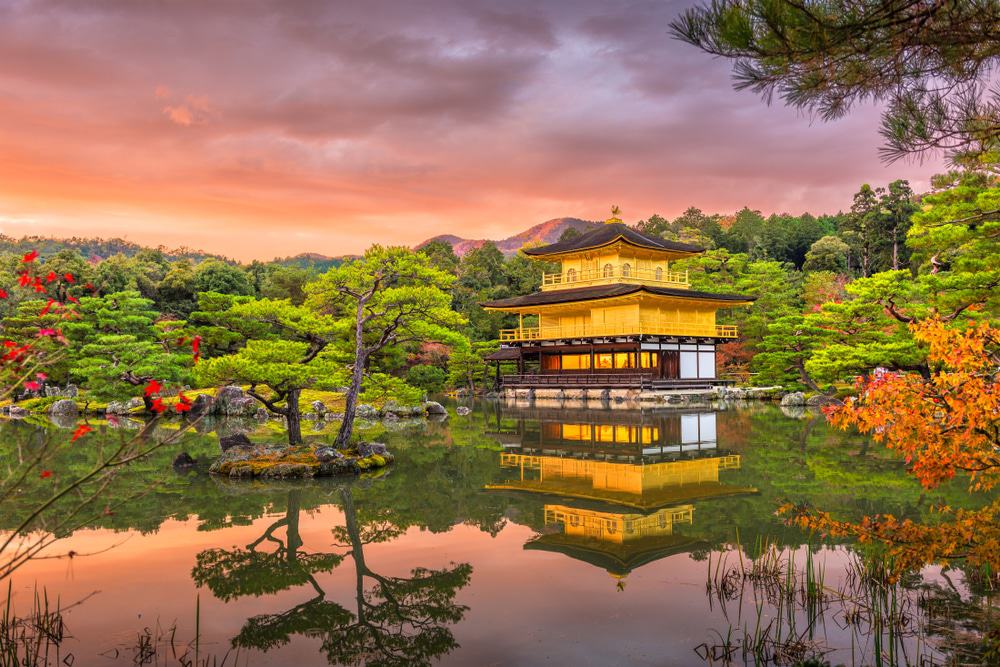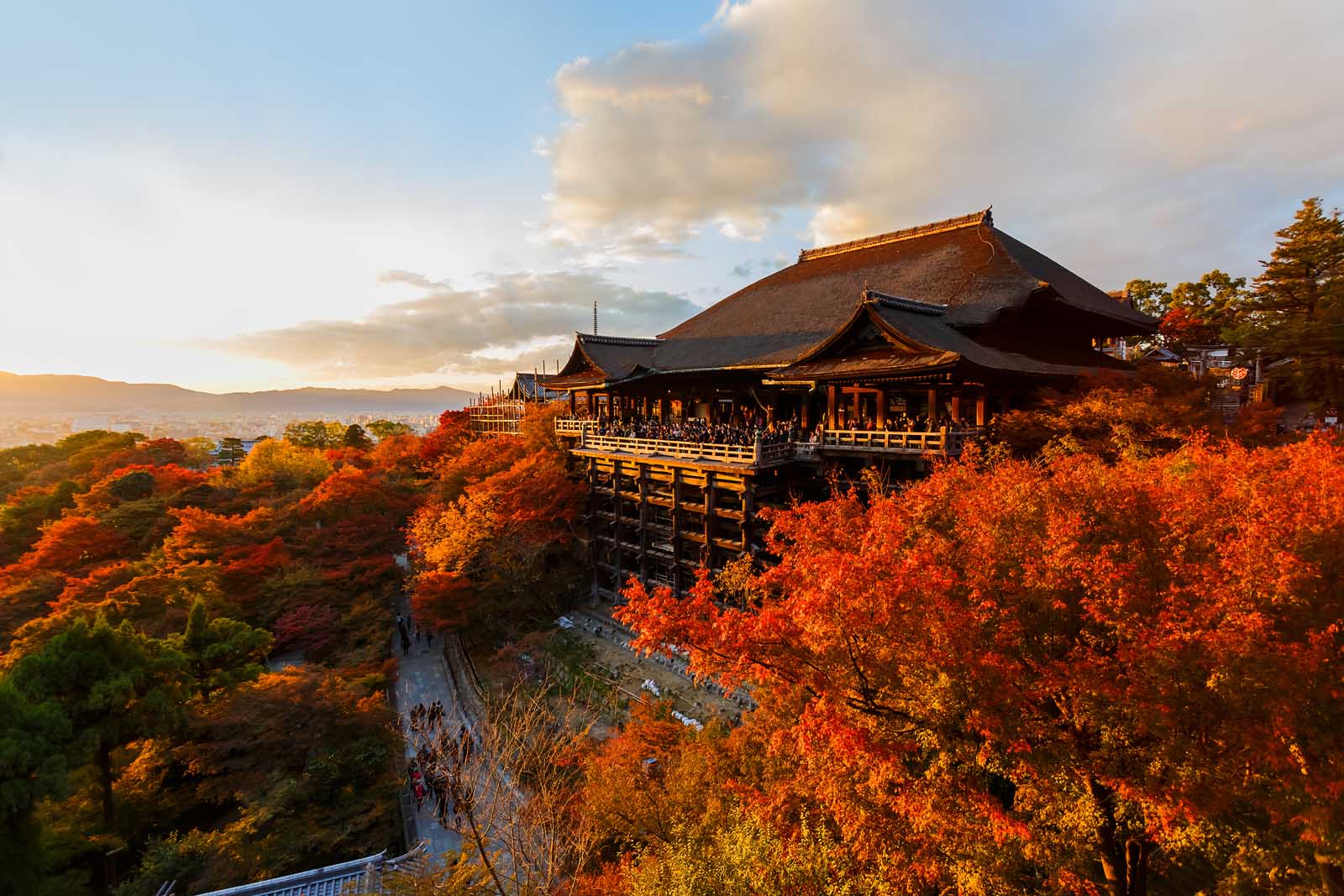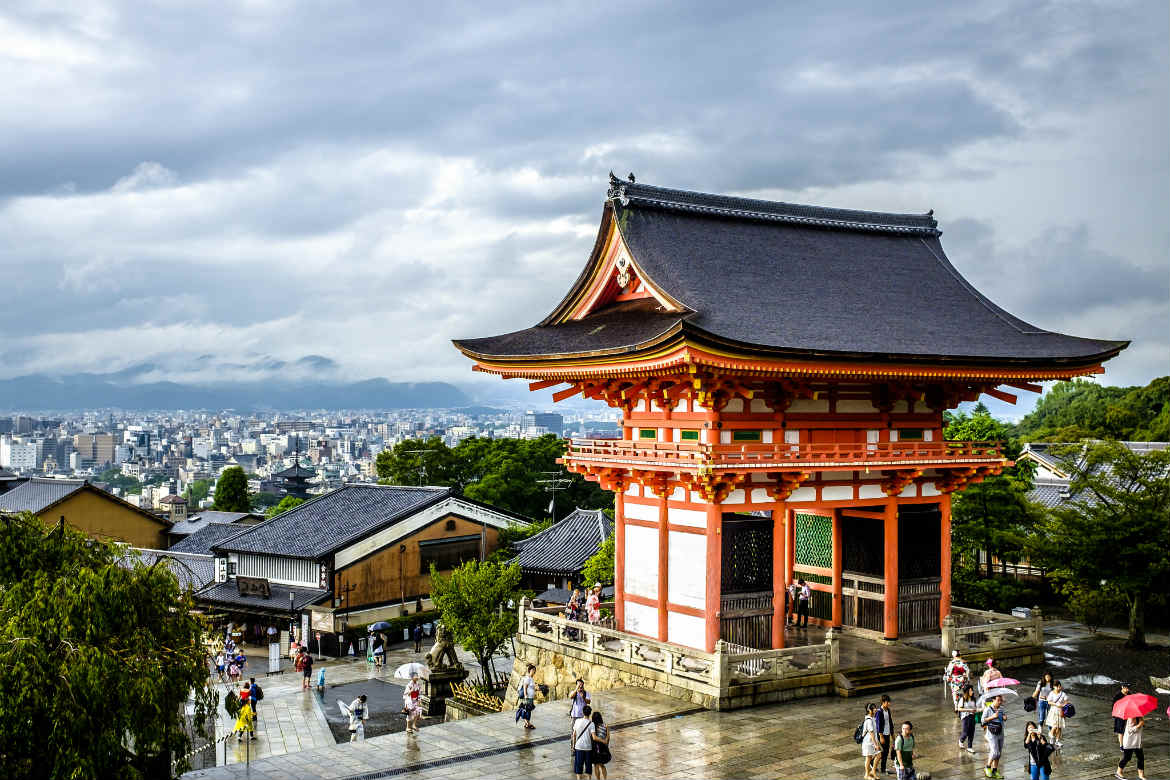
Nestled amidst verdant mountains, Kyoto stands as a timeless testament to Japan’s profound cultural heritage. For over a millennium, it served as the imperial capital, meticulously cultivating a unique identity steeped in tradition, artistry, and spiritual devotion. Unlike many cities that have shed their past in the relentless march of modernity, Kyoto has masterfully preserved its soul, offering visitors a mesmerizing blend of ancient temples, serene gardens, traditional wooden machiya houses, and the ethereal grace of geisha. To step into Kyoto is to journey back in time, to experience the very essence of Japan, where every stone tells a story and every alley whispers of a bygone era.
This article will guide you through the heart of Kyoto, exploring its fascinating history, unveiling its most captivating attractions, offering practical travel tips, navigating its transportation networks, and helping you find the perfect place to rest your head, all to ensure your visit to this extraordinary city is nothing short of magical.
A Glimpse into Kyoto’s Rich History

Related Articles about Kyoto: A Journey Through Japan’s Soulful Ancient Capital:
- Maldives: An Azure Dream – Your Ultimate Travel Guide to Paradise
- Tokyo: A Metropolis of Enchantment – Your Ultimate Travel Guide
- Yogyakarta: The Soul of Java – A Complete Guide
- Iceland: A Traveler’s Guide to the Land of Fire and Ice
- Oman: A Jewel of Arabia – Your Essential Travel Guide
Kyoto’s story begins in 794 AD, when Emperor Kanmu established Heian-kyo (meaning "capital of peace and tranquility") as the new imperial capital. For over 1,000 years, until the Meiji Restoration in 1868, Kyoto remained the center of Japanese political, cultural, and religious life. This extended period saw the flourishing of an unparalleled court culture, giving birth to iconic literary works like The Tale of Genji, the development of refined arts such as ikebana (flower arrangement) and the tea ceremony, and the construction of thousands of temples and shrines that still grace its landscape today.
While the city weathered periods of political upheaval, including the rise of the samurai class and devastating civil wars like the Ōnin War in the 15th century, its cultural significance never waned. Each era left its indelible mark, contributing to the city’s architectural diversity and spiritual depth. Even after the capital moved to Tokyo, Kyoto retained its role as the guardian of traditional Japan. Miraculously spared from the widespread destruction of World War II, a decision attributed to its immense cultural value, Kyoto stands today as a living museum, its 17 UNESCO World Heritage Sites serving as poignant reminders of its illustrious past. This deep-rooted history is not just preserved in museums but is actively lived in its daily rituals, its artisanal crafts, and the quiet dignity of its ancient districts.
Kyoto’s Irresistible Top Attractions
Kyoto boasts an astounding array of attractions, each offering a unique window into its soul. From shimmering golden pavilions to tranquil rock gardens, the choices can be overwhelming. Here are some of the absolute must-sees:
Iconic Temples & Shrines:
- Kinkaku-ji (The Golden Pavilion): Perhaps Kyoto’s most iconic image, this magnificent Zen temple is entirely covered in gold leaf, shimmering brilliantly against its surrounding pond and meticulously manicured gardens. Originally a retirement villa for a shogun, it was converted into a Zen temple upon his death. The current structure is a reconstruction, but its beauty remains breathtaking, especially on a sunny day or with a dusting of snow.
- Fushimi Inari-taisha: Prepare to be awestruck by the seemingly endless tunnels of vibrant orange torii gates winding up Mount Inari. Dedicated to Inari, the Shinto god of rice and sake, this shrine is famous for its thousands of gates, each donated by an individual or company. It’s an immersive experience that combines spiritual pilgrimage with a rewarding hike, offering stunning views of Kyoto from above.
- Kiyomizu-dera (Pure Water Temple): A UNESCO World Heritage Site, Kiyomizu-dera is famous for its expansive wooden stage that juts out from the main hall, offering panoramic views of the city. Built without a single nail, the temple is also home to the Otowa Waterfall, where visitors can drink from three streams, each believed to grant a different blessing (longevity, success, and love). The approach through the bustling Sannenzaka and Ninenzaka streets, lined with traditional shops, adds to its charm.
- Ginkaku-ji (The Silver Pavilion): In stark contrast to Kinkaku-ji’s opulence, Ginkaku-ji exudes a serene, understated elegance. While it never received its intended silver leaf, its beauty lies in its exquisite dry sand garden, "Sea of Silver Sand," and its meticulously sculpted moss garden. It’s a place for quiet contemplation, embodying the Japanese aesthetic of wabi-sabi – finding beauty in imperfection and impermanence.
- Ryoan-ji: Home to Japan’s most famous rock garden, Ryoan-ji is a masterpiece of Zen minimalism. Fifteen rocks are arranged on a bed of white gravel in such a way that, from any vantage point, at least one rock is always hidden from view. This simple yet profound garden invites introspection and meditation, a powerful experience in tranquility.

Enchanting Gardens & Natural Wonders:
- Arashiyama Bamboo Grove: Step into a world of ethereal beauty as you walk through towering stalks of bamboo that seem to reach for the heavens. The gentle rustling of the bamboo leaves in the wind creates a soothing, otherworldly soundtrack. Beyond the grove, explore the charming Arashiyama district with its Togetsukyo Bridge, Tenryu-ji Temple (another UNESCO site), and scenic boat rides on the Hozugawa River.
- The Philosopher’s Path (Tetsugaku no Michi): This picturesque canal-side path, named after the influential philosopher Nishida Kitaro who meditated here, is especially stunning during cherry blossom season (early April) and autumn (late November). Lined with hundreds of cherry trees, it connects Ginkaku-ji with Nanzen-ji Temple, passing by numerous smaller temples, cafes, and boutiques.
Cultural & Historic Districts:
- Gion: Kyoto’s most famous geisha district, Gion is a living postcard of traditional Japan. Wander its narrow streets, particularly Hanamikoji-dori, lined with preserved machiya houses, tea houses, and exclusive restaurants. In the early evening, you might catch a glimpse of a geiko (Kyoto geisha) or maiko (apprentice geisha) gracefully heading to an engagement, a truly magical sight. Don’t forget to explore the charming Pontocho alley for dining and nightlife.
- Higashiyama District: Stretching up to Kiyomizu-dera, the Higashiyama district offers a captivating glimpse into old Kyoto. Its winding cobblestone lanes, Sannenzaka and Ninenzaka, are lined with beautifully preserved wooden buildings housing traditional shops selling ceramics, sweets, pickles, and crafts. It’s the perfect place to stroll, shop for souvenirs, and soak in the atmosphere.
Unique Experiences:
- Kyoto Imperial Palace: Once the residence of Japan’s Imperial Family, the palace grounds are now open to the public, offering a serene escape in the heart of the city. While the buildings themselves are relatively plain, the expansive park and meticulous gardens are a testament to imperial elegance.
- Tea Ceremony (Chanoyu): Immerse yourself in the meditative art of the Japanese tea ceremony. Many establishments offer authentic experiences, providing insight into the philosophy and etiquette behind this revered tradition.
- Kimono Rental: Enhance your exploration of Kyoto by donning a traditional kimono or yukata. Many shops offer rentals, allowing you to stroll through historic districts feeling like you’ve truly stepped back in time.
Navigating Kyoto: Transportation
Kyoto boasts an exceptionally efficient and user-friendly public transportation system, making it easy to explore its widespread attractions.
- Buses: The extensive bus network is the primary mode of transport for many tourists, reaching virtually every major attraction. While routes can initially seem complex, comprehensive English maps and digital displays help navigate. A one-day bus pass is often a cost-effective option if you plan to visit multiple sites.
- Subways: Kyoto has two subway lines – the Karasuma Line (north-south) and the Tozai Line (east-west). They are excellent for quickly traversing the central areas and connecting to major train stations.
- Trains: JR lines (Japan Railways) are useful for reaching Fushimi Inari-taisha, Arashiyama, and for day trips outside the city. Private lines like Keihan and Hankyu also serve various areas, including access to Osaka.
- IC Cards: For ultimate convenience, purchase an ICOCA card (Kyoto’s local IC card) or use any compatible IC card like Suica or Pasmo. These rechargeable cards can be used on all buses, subways, and trains, eliminating the need to buy individual tickets.
- Taxis: Taxis are readily available but are generally more expensive than public transport. They can be a good option for groups, late-night travel, or when time is of the essence.
- Walking & Biking: Many of Kyoto’s charm lies in its pedestrian-friendly districts. Walking is the best way to explore areas like Gion, Higashiyama, and the Philosopher’s Path. Bicycle rentals are also popular, offering a pleasant way to see the city at your own pace, especially along the Kamo River.
Where to Stay: Accommodation Options
Kyoto offers a diverse range of accommodation, catering to every budget and preference, from traditional Japanese inns to modern luxury hotels.
- Ryokans: For an authentic Japanese experience, a stay in a ryokan (traditional inn) is highly recommended. These often feature tatami mat rooms, futon beds, kaiseki (multi-course) dinners, and sometimes even private or communal onsen (hot springs). High-end ryokans offer unparalleled hospitality and a serene retreat.
- Boutique & Luxury Hotels: Kyoto has a growing number of stylish boutique hotels that blend modern comfort with traditional Japanese aesthetics. International luxury brands also have a strong presence, offering world-class amenities and service.
- Mid-Range Hotels: You’ll find plenty of comfortable Western-style hotels with good amenities, especially around Kyoto Station and the central Kawaramachi area. These often provide a good balance of comfort and value.
- Budget Options: Hostels, guesthouses, and capsule hotels are excellent choices for budget-conscious travelers, offering clean, friendly, and often very stylish accommodations.
- Location, Location, Location:
- Kyoto Station Area: Ideal for first-time visitors due to its excellent transport links, proximity to major attractions, and abundance of dining and shopping options.
- Gion / Kawaramachi: Perfect for those seeking a vibrant atmosphere, traditional charm, and easy access to nightlife, shopping, and geisha districts.
- Central Kyoto (around Karasuma/Shijo): A good balance, offering convenient subway access, business hotels, and proximity to cultural sites.
- Arashiyama: For a quieter, more nature-focused stay, particularly appealing during cherry blossom or autumn leaf seasons, though further from the city center.
Essential Travel Tips for a Seamless Trip
To make the most of your Kyoto adventure, keep these practical tips in mind:
- Best Time to Visit:
- Spring (March-May): Cherry blossom season (late March to early April) is breathtaking but incredibly crowded and expensive. Late April and May offer pleasant weather and beautiful greenery.
- Autumn (October-November): Autumn foliage (mid-November to early December) is equally stunning and popular. The weather is crisp and comfortable.
- Summer (June-August): Hot and humid, with the rainy season in June. Fewer crowds (except during the Gion Matsuri in July and Obon in August), but intense heat can be challenging.
- Winter (December-February): Cold, with occasional light snow that transforms temples into magical landscapes. It’s the quietest season, offering a more serene experience.
- Cultural Etiquette: Japan values politeness and respect. Bowing is customary, remove your shoes before entering homes, temples, and some restaurants, and speak quietly on public transport. Always ask permission before photographing people, especially geisha.
- Comfortable Shoes: You’ll be doing a lot of walking! Prioritize comfortable footwear.
- Packing Layers: Kyoto’s weather can be unpredictable, especially during shoulder seasons. Layers will help you adapt to temperature changes.
- Connectivity: Rent a portable Wi-Fi device or purchase a local SIM card upon arrival. Google Maps and translation apps will be invaluable.
- Cash is King (Still): While credit cards are increasingly accepted, many smaller shops, restaurants, and temple entrances still prefer or require cash. ATMs are widely available at convenience stores.
- Learn Basic Phrases: Even a few Japanese phrases (hello, thank you, excuse me) will go a long way and are greatly appreciated.
- Book Ahead: Especially during peak seasons (cherry blossom, autumn leaves), accommodation, popular ryokans, and some high-end restaurants book up months in advance.
- Kyoto City Pass: Consider a Kyoto City Bus & Subway Pass if you plan extensive use of public transport for a few days.
Conclusion
Kyoto is more than just a collection of historical sites; it is a living, breathing testament to Japan’s enduring spirit. It’s a city where ancient traditions are woven into the fabric of daily life, where moments of profound beauty await around every corner, and where the past harmoniously coexists with the present. From the golden glow of Kinkaku-ji to the rustling bamboo groves of Arashiyama, from the solemn rituals of a tea ceremony to the lively bustle of Nishiki Market, Kyoto offers an unparalleled journey into the heart of Japanese culture. Take your time, wander its ancient streets, savor its culinary delights, and allow yourself to be captivated by the timeless charm of this extraordinary city. Your journey through Kyoto will undoubtedly leave an indelible mark on your soul, inviting you to return again and again.





